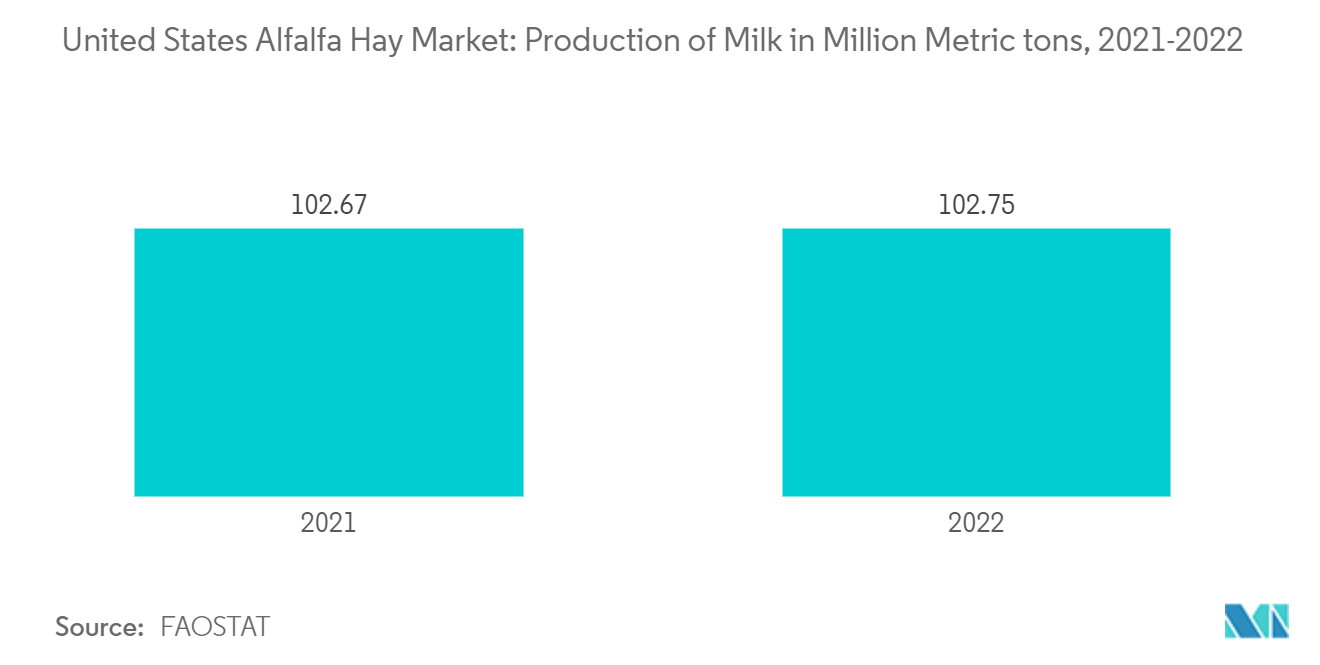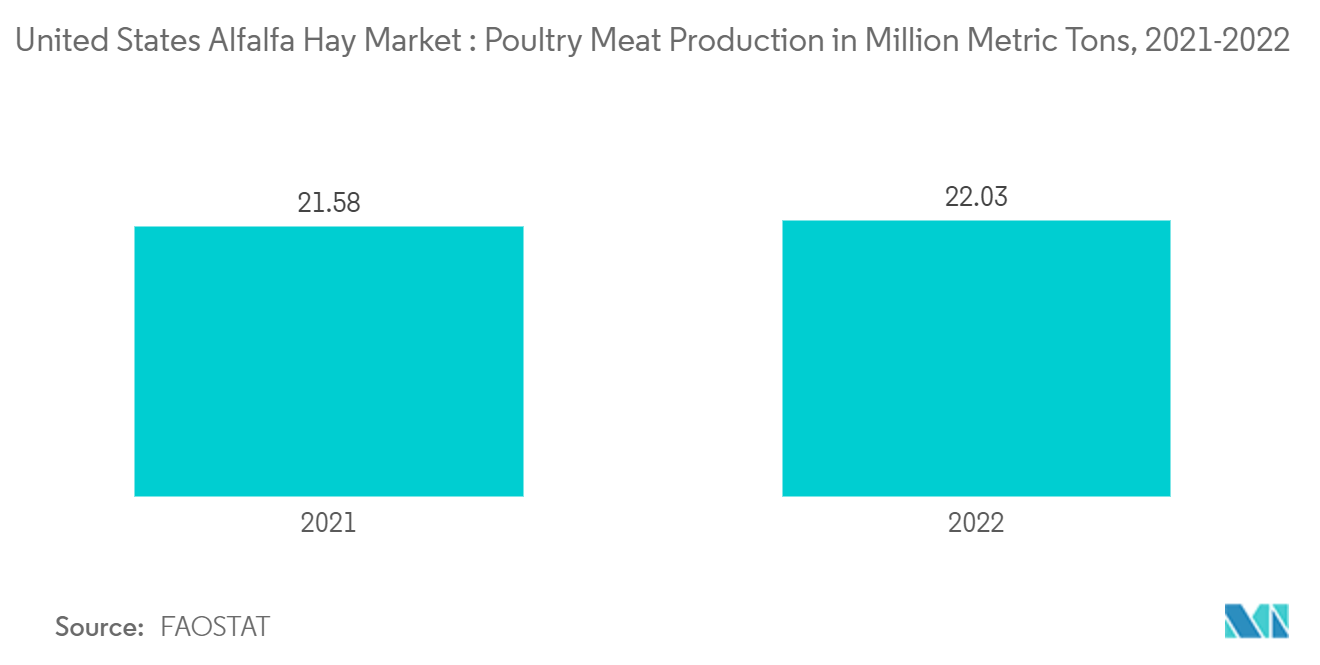Market Trends of United States Alfalfa Industry
Increasing Demand for Alfalfa Pellets
Increasing livestock production in the United States is indeed driving demand for pellet alfalfa hay, as this form of feed offers several benefits for both livestock and farmers. According to the Food and Agriculture Organization (FAO), the United States had the largest population of cattle in North America, with the beef and dairy cattle population standing at around 92,077 million heads in 2022.
Alfalfa is prized for its high protein content, fiber, vitamins, and minerals, which are essential for livestock health, especially in high-performance animals like dairy cows, beef cattle, horses, and even goats. Pellet alfalfa hay offers the same nutritional value but in a more concentrated and efficient form, making it easier to feed livestock in controlled portions.
Besides, increasing milk production in the United States is a significant driver of alfalfa pellet demand. For instance, according to FAOSTAT, United States milk production was 102.67 million metric tons in 2021, which increased to 102.75 million metric tons in 2022. Dairy cows require a high-protein, high-fiber diet to support milk yield, and alfalfa is a key part of their feed. Pelletized alfalfa ensures consistent nutrition, reduces waste, and simplifies feeding logistics. Further, for beef cattle, especially in feedlots, alfalfa pellets are used as a protein supplement. As the beef industry grows, driven by both domestic demand and exports, the need for efficient feed options like alfalfa pellets is expanding.

Poultry Feed is a Significant Segment by Application
The rising demand for poultry meat and other products in the United States created a situation of enhancing yield by improving performance. This, in turn, resulted in scientific feeding practices. The growth of the market in the region is mainly driven by the increasing poultry meat production, rising animal health concerns, and growing industrialization of livestock. According to the Food and Agriculture Organization, in 2022, poultry meat production was 22.03 million metric tons from 21.58 million metric tons in 2021.
In the United States, the demand for alfalfa hay as poultry feed in the United States is relatively smaller compared to its use in cattle and dairy farming, but it is still a significant market within the broader animal feed industry. The primary demand for alfalfa hay in poultry feed stems from the need for high-fiber, nutrient-dense ingredients that support overall poultry health and egg production. Poultry, especially laying hens, benefit from fiber for digestive health. The fiber helps in maintaining healthy gut function, improving feed digestion, and supporting overall health. Alfalfa hay’s high fiber content makes it a good addition to some poultry diets. Further, as consumers increasingly demand healthier, natural, and organic products, poultry producers are turning to alternative feed ingredients like alfalfa hay to meet these consumer preferences. This trend has increased demand in organic and free-range poultry markets.


